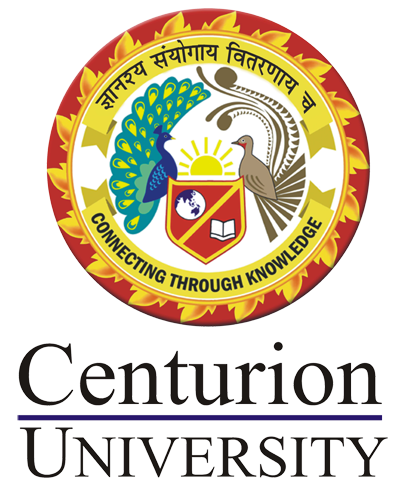I am text block. Click edit button to change this text. Lorem ipsum dolor sit amet, consectetur adipiscing elit. Ut elit tellus, luctus nec ullamcorper mattis, pulvinar dapibus leo.
Anaesthesia for specialty surgeries for ventilated patients 2
Course Attendees
Still no participant
Course Reviews
Still no reviews
| Subject Code | Name of the Subject | T-Pr-Pi | Credits |
| CUTM 1825 | ANESTHESIA FOR SPECIALTIES
(INCLUDING CRITICAL CARE ASSISTANCE AND VENTILATION) PAPER – II |
3-0-1 | 4 |
Course Objectives
- To provide in-depth knowledge of anesthesia techniques for cardiac, neuro, trauma, obstetric, pediatric, and day care procedures.
- To develop skills in monitoring, invasive and non-invasive, and interpreting hemodynamic data.
- To train students in preoperative preparation, induction techniques, and intraoperative precautions for high-risk patients.
- To enhance capability in postoperative ICU care and pain management.
- To familiarize students with modern ICU equipment and respiratory support technologies.
- To cultivate decision-making skills in emergencies and rapid sequence situations.
Course Outcomes
On successful completion of the course, the learner will be able to:
CO1: Demonstrate a comprehensive understanding of anesthesia principles across cardiac, neuro, trauma, obstetric, pediatric, and day care settings.
CO2: Apply preoperative assessment, intraoperative management, and postoperative care strategies tailored to each specialty.
CO3: Safely operate and interpret monitoring systems and ICU equipment for critically ill patients.
CO4: Identify and manage anesthesia-related complications and emergencies.
ModuleI:CARDIACANESTHESIA
NYHA classification, Arrhythmias, Angina, Dyspnoea, Premedication, Setting up of monitoring system, Monitoring – invasive and non-invasive, Getting ready for the case, Induction of cardiac patient, precautions to be taken, transferring the patient to ICU, Care to be taken, ICU management
Module II: NEURO ANAESTHESIA
Glasgow coma scale, Signs of raised ICT, Premedication, Check list, Induction of a patient Positioning in neuro surgery, I.C.P. monitoring, Air embolism, Transferring to I.C.U. / Ward
Module III: ANAESTHESIA FOR TRAUMA & SHOCK
Resuscitation, Preop investigation /assessment, Circulatory management, Management of anaesthesia, Rapid sequence induction, other problems
Module IV: OBSTETRIC ANAESTHESIA
Differences between a pregnant and a normal lady, Risks for anaesthesia, Precautions to be taken Check list, regional vs general anaesthesia, Induction / maintenance. Resuscitation of the new born, APGAR score, Reversal and extubation, Emergencies – Manual removal of placenta, A.P.H,- P.P.H., Ruptured uterus, Ectopic pregnancy, Labour, Epidural analgesia,
Module V: PEDIATRIC ANAESTHESIA
Theatre setting, Check list, Premedication, Induction, Intubations-securing the ETT, Monitoring, Reversal & extubation – problems, Transferring / IC management, Pain management.
Module VI: DAY CARE ANAESTHESIA
Special features, Set up, Advantages, Disadvantages, Complications, Future
Module VII: EQUIPMENT IN ICU
Monitors, ABG, different types of ventilators, CPAP, BiPAP, HFNC, ECMO
Session 1: NYHA classification and its relevance in anesthesia
PPT Link:
Video Link:
Session 2: Management of arrhythmias in cardiac anesthesia
PPT Link:
Video Link:
Session 3: Anesthetic considerations in angina and dyspnoea
PPT Link:
Video Link:
Session 4: Premedication strategies for cardiac patients
PPT Link:
Video Link:
Session 5: Setting up and calibrating monitoring systems in cardiac anesthesia
PPT Link:
Video Link:
Session 6: Invasive and non-invasive monitoring in cardiac surgery
PPT Link:
Video Link:
Session 7: Preoperative preparation for cardiac surgical cases
PPT Link:
Video Link:
Session 8: Induction techniques for cardiac patients and precautions
PPT Link:
Video Link:
Session 9: Postoperative transfer of cardiac patients to ICU
PPT Link:
Video Link:
Session 10: ICU care and management after cardiac surgery
PPT Link:
Video Link:
Session 11: Glasgow Coma Scale and neurological assessment
PPT Link:
Video Link:
Session 12: Signs and management of raised intracranial tension
PPT Link:
Video Link:
Session 13: Premedication and preparation for neurosurgery
PPT Link:
Video Link:
Session 14: Checklist and preparation for neuroanesthesia
PPT Link:
Video Link:
Session 15: Induction techniques for neurosurgical patients
PPT Link:
Video Link:
Session 16: Positioning considerations in neurosurgery
PPT Link:
Video Link:
Session 17: ICP monitoring methods and interpretation
PPT Link:
Video Link:
Session 18: Recognition and management of air embolism in neurosurgery
PPT Link:
Video Link:
Session 19: Safe transfer of neurosurgical patients to ICU or ward
PPT Link:
Video Link:
Session 20: Resuscitation principles in trauma and shock
PPT Link:
Video Link:
Session 21: Preoperative investigations and assessment in trauma cases
PPT Link:
Video Link:
Session 22: Circulatory management in trauma anesthesia
PPT Link:
Video Link:
Session 23: Anesthetic management in trauma patients
PPT Link:
Video Link:
Session 24: Rapid sequence induction and airway control in trauma
PPT Link:
Video Link:
Session 25: Special challenges and problems in trauma anesthesia
PPT Link:
Video Link:
Session 26: Physiological changes in pregnancy relevant to anesthesia
PPT Link:
Video Link:
Session 27: Anesthetic risks and precautions in obstetric patients
PPT Link:
Video Link:
Session 28: Regional versus general anesthesia in obstetric practice
PPT Link:
Video Link:
Session 29: Induction and maintenance of anesthesia in obstetric cases
PPT Link:
Video Link:
Session 30: Newborn resuscitation and APGAR scoring
PPT Link:
Video Link:
Session 31: Reversal, extubation, and obstetric emergencies
PPT Link:
Video Link:
Session 32: Epidural analgesia and labor anesthesia
PPT Link:
Video Link:
Session 33: Theatre preparation and checklist for pediatric anesthesia
PPT Link:
Video Link:
Session 34: Premedication and induction techniques in pediatric patients
PPT Link:
Video Link:
Session 35: Intubation and securing ETT in pediatric anesthesia
PPT Link:
Video Link:
Session 36: Monitoring, reversal, and extubation challenges in pediatrics
PPT Link:
Video Link:
Session 37: Pediatric ICU transfer and pain management
PPT Link:
Video Link:
Session 38: Day care anesthesia features, setup, and patient selection
PPT Link:
Video Link:
Session 39: Advantages, disadvantages, and complications of day care anesthesia
PPT Link:
Video Link:
Session 40: Future trends in day care anesthesia
PPT Link:
Video Link:
Session 41: ICU monitoring equipment and their applications
PPT Link:
Video Link:
Session 42: Arterial blood gas analysis and interpretation
PPT Link:
Video Link:
Session 43: Ventilators and modes of ventilation in ICU
PPT Link:
Video Link:
Session 44: CPAP, BiPAP, HFNC, and ECMO in ICU management
PPT Link:
Video Link:
Our Main Teachers
Teacher in Anesthesia Department

